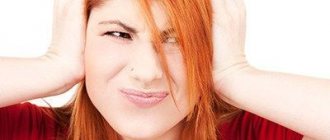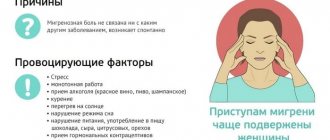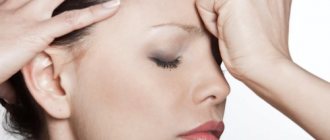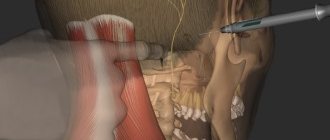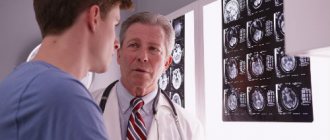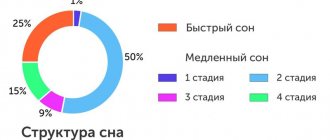Noise in the head is a symptom that occurs in 10-15% of the population. A person hears sounds in the absence of a source of irritation. The noise is heard only by the individual himself. Patients suffer for years because they do not receive an adequate solution to the problem. Tinnitus disrupts the usual way of life, affects the ability to work, makes it difficult to pay attention, and impairs sleep. In some cases, the lack of timely assistance leads to disability.
Kinds
The work of the body is accompanied by the appearance of somatic or vibrator sounds. They appear during breathing, heartbeat, muscle contraction, and blood circulation. Somatic sounds become perceptible under certain conditions:
- heightened perception;
- noticeable increase in vibrations;
- the appearance of nonspecific noises.
In otolaryngology, the following groups of sounds are distinguished:
- vascular;
- noises of the external and middle ear;
- muscular;
- peripheral;
- centrally sensory.
Noises have a number of characteristics. They can be unilateral and bilateral, constant and periodic, monotonous and pulsating, high-frequency and low-frequency, intense and mild.
The severity of discomfort varies. According to the classification of A.P. Velitsky, there are 3 degrees of noise:
- weak;
- average;
- strong.
At the initial stage, the patient may not notice the discomfort, but only pays attention to it during the examination. That is, this is not the main symptom that led to seeking help.
The average degree of severity manifests itself in complaints of noise, but the patient does not pay attention to it. In severe cases, noise in the head and ears is the main symptom. A person feels constant discomfort, which worsens the quality of life.
In clinical practice, there are several classifications. According to E.R. Fowler, there are 2 types of tinnitus:
- vibrator (objective, related to the work of organs and systems);
- non-vibratory (subjective, resulting from irritation of the auditory nerve).
Objective noise occurs as a result of vascular and muscular pathology.
Vascular murmurs are characterized by a number of signs:
- permanence;
- synchronization with the pulse;
- changes in intensity depending on the degree of compression of blood vessels and the position of the head.
Increased discomfort is associated with increased blood pressure.
Muscle noise is not constant. The sounds that a person hears are similar to the chirping of a grasshopper. Some describe them as clicking.
Subjective noise is perceived as more painful. The sounds that the patient hears do not carry any information. The brain tries to decipher them, but to no avail. As a result, a person feels fear and anxiety.
Diagnostic methods
Timely diagnosis is the main condition for successful treatment of diseases that are accompanied by headaches and tinnitus. After the examination, the doctor will prescribe additional examinations that will determine the main cause of the deterioration in health. So, the following diagnostic methods may be needed:
- measuring blood pressure, including monitoring this indicator throughout the day;
- blood tests - general and biochemical, as well as determination of glucose and cholesterol levels;
- angiography of cerebral vessels - allows you to determine the intensity of blood circulation, the presence of spasms and blockage of the arteries;
- computer or magnetic resonance imaging is the main method for detecting tumors, aneurysms and other pathologies that require surgical treatment, as well as diseases of the cervical spine.
The Clinical Brain Institute houses precise, modern equipment for diagnosing a number of diseases. Experienced doctors will prescribe only the necessary examinations, which will allow you to quickly make an accurate diagnosis and begin treatment. It is important that it is impossible to obtain all the necessary information about the stage of the disease and its causes either at home or on the basis of a simple examination.
Causes
Noise in the head appears against the background of the development of many diseases. In some cases, it is not a harbinger of any dangerous condition. Endogenous sounds appear as a result of contraction of muscles and ligaments, crunching of joints, and blood pulsation.
Objective noise occurs due to several reasons:
- neuromuscular;
- muscular-articular;
- vascular.
Tinnitus is the result of the development of the following pathologies:
- vascular atherosclerosis;
- hepatitis A;
- diabetes mellitus;
- hypoglycemia;
- hypo- and hyperthyroidism;
- diseases of the outer, middle, inner ear;
- sulfur plugs;
- otitis;
- otosclerosis;
- Meniere's disease;
- hearing loss;
- acoustic and barotrauma;
- malignant neoplasms of the cerebellopontine angle, brain;
- intoxication;
- pathologies of the cervical spine;
- psychoneurological diseases;
- chronic fatigue syndrome;
- stress.
Subjective noise in some cases is the result of industrial factors, exposure to a sharp loud sound.
Elderly people more often suffer from noise in the head due to cardiac dysfunction, high blood pressure, and age-related changes.
Causes of headaches and tinnitus
It is important to determine the cause of the headache. If it is accompanied by noise, there are two types of it: objective and subjective. The first option is the one that is heard not only by the patient, but also by the doctor during the examination. It can be created by blood vessels, the muscles of the middle ear, the auditory tube, and also appear due to improper functioning of the temporomandibular joint. Subjective noise is heard only by humans; it is not detected during examination.
Diseases of the ENT organs
One of the common reasons for headaches and tinnitus is diseases of the ENT organs. They can occur due to hypothermia, exposure to viral and bacterial infections, as well as due to injuries and congenital abnormalities of the structure of organs. As a result of diagnosis, various diseases can be detected that require an individual approach to treatment.
- Otitis is an inflammation of the ear. The disease is accompanied by pain in the head and ear, as well as noise and buzzing in the ears, and hearing impairment. In the initial stages, symptoms may be nonspecific and include only hearing impairment and noise in the head. Otitis media is the most dangerous, since the inflammatory process can spread to the membranes of the brain. Another characteristic symptom is the appearance of discharge from the auditory canals.
- Blockage of the auditory canals is accompanied by hearing impairment, headaches, noise and deterioration of well-being. It can be caused by cerumen plugs, which appear as a result of improper ear hygiene or increased sulfur production. Also, during diagnosis, foreign objects may be detected in the ear canals.
- Meniere's disease is a specific disease in which the amount of fluid in the labyrinth of the ear increases. This organ is located in the inner ear and not only performs the auditory function, but is also responsible for balance. If the volume of free fluid exceeds the norm, the patient experiences headaches, tinnitus, dizziness, nausea and other symptoms.
- Neoplasms are detected as a result of a comprehensive diagnosis of ENT organs. Their danger is determined by their type and size, and the need for surgery is determined by the doctor.
Diseases of the ear and ENT organs require timely diagnosis and treatment. If they progress, there is a possibility of infection or inflammation spreading to neighboring structures, including the lining of the brain.
Vascular diseases
Tinnitus is often associated with pathologies of the vascular system. It is caused by improper blood circulation through the arteries, which can cause oxygen starvation of brain cells. This causes dizziness, tinnitus, a sharp deterioration in health, and over time can also provoke a stroke.
During diagnosis, the following disorders may be detected:
- atherosclerosis (main article: Headache as a symptom of atherosclerosis) is a disease that is manifested by the deposition of cholesterol and some fractions of lipoproteins on the inner walls of blood vessels, the formation of plaques and blood clots;
- hypertension (main article: Headache in hypertension) is a chronic disease in which there is a frequent increase in blood pressure, which over time leads to stretching of arterial walls, slowing blood circulation and deteriorating oxygen supply to brain cells;
- stenosis (narrowing) of the lumen of the vertebral and carotid arteries, which directly provide blood supply to the brain.
If you suspect vascular disease, it is important to undergo examination by a cardiologist. These disorders can be caused by heart pathologies, congenital or acquired defects. For chronic diseases of the cardiovascular system, it is important to periodically contact a specialist for routine examinations.
Diseases of the cervical spine
Main article: Headache with cervical osteochondrosis
The cervical spine contains important vessels that carry blood to the brain. Normally, they pass through holes in the vertebrae, thereby being protected from mechanical damage. However, in a number of diseases, arteries are compressed by surrounding tissues, and oxygen access to brain cells is impaired. As a result of a comprehensive examination, the following disorders can be diagnosed:
- osteochondrosis is a chronic disease in which slow destruction of the tissues of the vertebrae and intervertebral discs occurs, as well as compression of the arteries and spinal nerve roots;
- intervertebral protrusions and hernias - pathological protrusion of cartilage, which leads to acute pain, limited mobility of the upper limbs, as well as tinnitus, hearing impairment and other symptoms;
- injuries and their consequences - with improper rehabilitation, as well as in the presence of serious injuries, symptoms may appear after a long time.
Treatment of diseases of the cervical spine depends on their type and stage. Your doctor may prescribe exercises to do at home, painkillers, anti-inflammatory medications, and muscle relaxants. However, some diseases may require surgery - it is prescribed for large hernias, comminuted fractures and other pathologies.
Migraine
Migraine is a primary headache. It is not caused by pathologies of any organs, and its origin is associated with vascular or nervous factors. There are several stages in the development of migraine, one of which is aura. In most patients, it appears several hours before a headache attack and includes the following symptoms:
- dizziness, tinnitus, auditory hallucinations;
- blurred vision, lacrimation, exacerbation of reaction to bright light;
- nausea, sudden deterioration in health;
- mood swings.
Migraine may first appear in both childhood and adulthood. Its attacks occur with a certain frequency and may be associated with changes in weather conditions or atmospheric pressure, or moving to a different climate zone. In addition, migraines can manifest themselves against the background of stress, nervous tension, and disruption of sleep schedules.
Other reasons
Headache and tinnitus are typical manifestations of many conditions. When they appear, it is important to undergo a full examination, since they can indicate both minor disorders and dangerous pathologies. Thus, as a result of diagnostics, the following changes may be detected:
- hypoglycemia – a decrease in blood glucose levels, which is typical for diabetes mellitus;
- intense physical activity without sufficient rest, which leads to deterioration of blood supply to the brain (main article: Headaches during exercise);
- inflammatory diseases, thyroid neoplasms;
- pathology of the temporomandibular joint.
A similar symptom complex can develop with prolonged use of certain medications. These include steroidal anti-inflammatory drugs and chemotherapy drugs. If headaches and tinnitus go away with rest, they do not indicate serious pathologies.
Which doctor treats
Since noise in the head is a symptom of ear diseases, as well as neurological pathologies, if an unpleasant symptom appears, you should contact an otolaryngologist or neurologist.
Why suffer from noise in your head if you can turn to a specialist at the Kuntsevo Medical and Rehabilitation Center to solve the problem?
IMPORTANT! You should not self-medicate, because noise in the head is a neurological symptom that may indicate the development of serious pathologies.
Our neurologist and otolaryngologist will conduct a detailed study of the causes of the symptom and indicate a direct path to solving the problem and getting rid of noise in the head. You just need to make an appointment with our doctor, who will not only help you get rid of the symptom, but will also describe a detailed course of rehabilitation.
Sign up
Treatment of headaches and tinnitus
To treat headaches, the doctor prescribes a regimen, which may include conservative methods or surgical intervention. For acute pain, you can take painkillers, but they will not affect the underlying cause. For different diseases, the following methods may be required:
- for hypertension - blood pressure correction agents, diuretics, medications to support heart function;
- for diseases of the cervical spine - therapeutic exercises, painkillers and muscle relaxants;
- specific treatment of ENT organs;
- diet for high cholesterol levels, diabetes mellitus;
- drugs for the treatment of migraine.
If possible, the doctor will prescribe medications to take at home. However, if surgery is necessary, it is recommended that the operation be performed as scheduled. The effectiveness of treatment depends on a well-chosen regimen, as well as on following all recommendations at home: diet, exercise, and others.
Treatment methods
A patient who seeks help undergoes an examination, on the basis of which he is prescribed treatment. There are 2 groups of methods: conservative and surgical. Preference is given to measures that include medicinal, physical, and psychotherapeutic methods of influence.
To reduce noise, patients are prescribed vasoactive, nootropic drugs, vitamins, antidepressants, tranquilizers, muscle relaxants, anticonvulsants, anesthetics, antihistamines, vasodilators, diuretics, homeopathic remedies, etc.
Physical methods include:
- phototherapy;
- electrotherapy;
- faradization;
- iontophoresis;
- ultrasound;
- mechanotherapy;
- reduction;
- reflexology.
Tinnitus Retraining Therapy (TRT) and cognitive behavioral psychotherapy are used as psychotherapeutic techniques.
Surgical tactics are used in case of significant pathological changes in the auditory organ.
Prevention methods
Timely prevention will help avoid headaches and tinnitus. Doctors at the Clinical Brain Institute recommend following the following recommendations:
- avoid stress and nervous tension;
- normalize your sleep and rest schedule;
- engage in regular physical exercise, including outdoor exercise;
- follow a diet that contains vitamins and microelements in sufficient quantities, as well as a minimum of fatty and fried foods;
- give up bad habits, smoking and drinking alcohol - they affect the condition of blood vessels.
At the Clinical Brain Institute, you can undergo a complete diagnosis and treatment of headaches that are accompanied by tinnitus. Our center has modern equipment. Its use allows you to get an accurate result in the shortest possible time, and then begin treatment of the underlying disease. Doctors warn that the effectiveness of treatment largely depends on compliance with all instructions at home, taking prescribed medications and following other instructions.
Rehabilitation and lifestyle restoration
Sound therapy is the main form of supportive treatment. Experts use audio maskers that reproduce environmental sounds. They distract from the main noise and improve the process of falling asleep.
Listening to musical works with certain acoustic characteristics has a beneficial effect on the body.
Some patients note an improvement in their condition after listening to the sounds of a departing train, rain, dripping water, or a washing machine.
Take a hearing test online
What does a hearing test tell you?
An online hearing test allows you to quickly and easily determine your hearing status. In just 3 minutes you can determine its spiciness. The result of the hearing test is called an “audiogram” and is an indication for doctor’s prescriptions.
We suggest the following hearing tests: signs of hearing loss; online frequency hearing test; hearing test in noise; speech recognition; modeling signs of hearing loss.
Take a hearing test
How to relieve an attack?
With vasospasm and significant circulatory impairment, severe pain occurs, noise and pulsation in the head interfere with work. You can alleviate the condition using the following methods:
- taking painkillers and antispasmodics - helps reduce pain;
- the use of local and systemic anti-inflammatory non-steroidal drugs - reduce pain, can remove pinched nerve endings, relieving inflammation;
- massage – helps relieve neck muscle spasms and eliminate tension.
With these measures you can get rid of the symptoms of cervical osteochondrosis, but only temporarily. The disease must be treated, and complex therapy is required.
Reason: severe stress
During emotional experiences, severe fear, and anxiety, a person’s temporal muscles tense.
Constant tightness of these muscles can lead to compression of the vessels of the ear canal, which causes the sensation of noise, ringing, and buzzing in the ears. What to do?
Acupressure will help - light massage of active points with your fingertips. It should be done in a circular motion with gentle pressure.
Press the point located in the dimple above the upper lip with your index finger for 7 seconds. Then, with medium force, press the point at the end of the root of the nose, near the eyebrows - also for 7 seconds. Repeat these techniques several times a day.
For 7 seconds, apply intense pressure with your ring finger to the place where your earlobe connects to your face. Then another 7 seconds - just in front of the tongue of the ear (there, if you touch, you will feel a small hole). And finally, another 7 seconds - at the beginning of the upper part of the cartilage of the auricle (you should also feel the hole there). After exercise, a pleasant warmth usually appears, which indicates improved blood circulation.
Calm, just calm! Six ways to relieve stress
More details
Which doctor should I contact for noise in the head due to osteochondrosis?
A neurologist treats osteochondrosis, its symptoms and consequences.
Since the disease has dangerous complications, you should choose an experienced specialist who can develop an individual and effective treatment program. Neurologists from the medical center in Rostov-on-Don have extensive experience in treating neurological diseases.
To make an appointment, you can call or leave a request on the website. A call center operator will contact you within 10-15 minutes.
Types of noise
Noise in the head and ears can be constant or short-lived, for example, it occurs only during surges in blood pressure, after stress or heavy physical exertion.
The ringing can be felt throughout the entire head or be localized in a specific place: the left or right temporal region, in the back of the head, in the ear area.
The nature of the sound can also be different. The head may ring, squeak, buzz, hum, whistle, hiss, crackle, click, roar, howl like a siren, the noise of the ocean, etc.
Sounds can be loud or quiet.
What noises are most common:
- White noise.
You can barely hear him. Feels like leaves are rustling. But it can cause inconvenience with its monotony and constancy. - "The hum of electrical wires."
Usually occurs with inflammation of the hearing aid, but the cause can be fever, physical or mental fatigue. - Dull noise.
It's heard somewhere deep in my head. May indicate vasoconstriction. - Monotonous noise.
My head is constantly buzzing. This is how osteochondrosis of the cervical spine and hearing impairment due to age can manifest themselves. - A sharp, deafening noise.
Appears with a head injury, high blood or intracranial pressure, or a ruptured eardrum. - Pulsating noise.
It can pulsate in the temporal, occipital region or ears. This usually indicates that the blood vessels are damaged. - Ringing noise.
It can be loud or quiet, sound constantly or for a short time. Usually accompanies diseases of the hearing aid. But perhaps this is a manifestation of hypertension. In this case, by lowering the pressure, you will reduce the ringing in your head.
If you do not have serious pathologies, but your head is still noisy, start by correcting your posture. It is necessary to remove all spasms and clamps in the cervical region that prevent blood from flowing to the head.
The MelAnnett Blossom marathon does this perfectly. For many women who have undergone it, as a “bonus” to the acquired ideal posture, there has also been a long-awaited “silence” in their heads.
What diseases can hide tinnitus?
The sound itself that a child hears not only brings him psychological discomfort, but can also hide a rather serious somatic pathology. For example:
- Vascular murmur may indicate a hidden oncological process in the brain or middle ear.
- Pulsating sounds and hissing tones may indicate vascular pathologies, such as aneurysm and arterial stenosis, abnormal arrangement of blood vessels;
- Subjective noise may indicate damage to the structures of the nervous system.
- Intense low-frequency noise may mask ear damage at the level of the cochlea. Due to inflammation of the structures of the inner ear, sound transmission is disrupted and hearing loss develops.
- Non-vibrator noise may indicate muscle-articular disorders, namely dysfunction of the temporomandibular joint and malocclusion.
To identify hidden pathologies, specialists use a multidisciplinary approach when examining and treating young patients.
Cause: osteochondrosis
This disease can compress the nerves connected to the auditory part of the brain. This often happens during sleep if you have taken an uncomfortable position. The result is an unpleasant high-pitched continuous hum of varying intensity in the head. It can be similar to the sound of a refrigerator running or the sound of cars honking during a traffic jam on the highway.
If the buzz in the head is associated with osteochondrosis, it should decrease or disappear altogether when taking a vertical position.
What to do?
Pay close attention to your sleeping conditions. The pillow should fit you exactly, not too high and not too low.
After waking up, it’s good to do a little gymnastics for the cervical spine. Rotate your head, stretch your ear to your shoulder, push an imaginary ball under your chin towards your chest.
Osteochondrosis: types of disease, symptoms and treatment methods
More details

